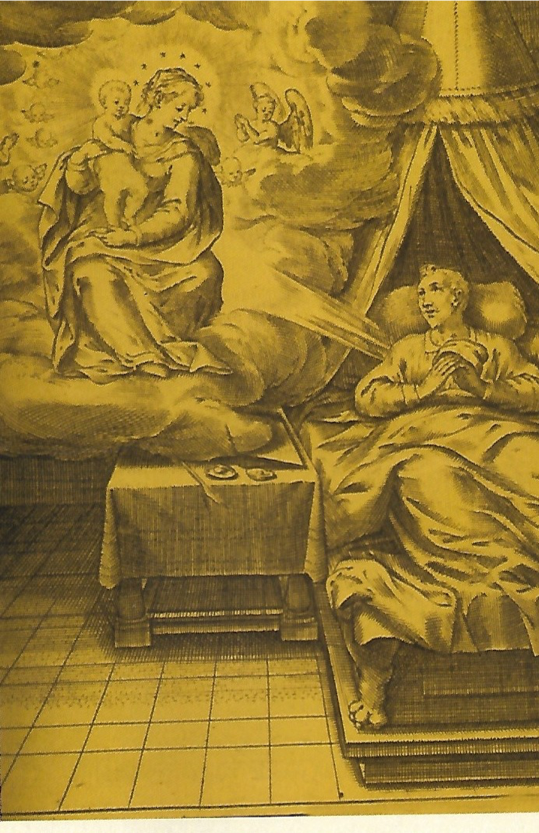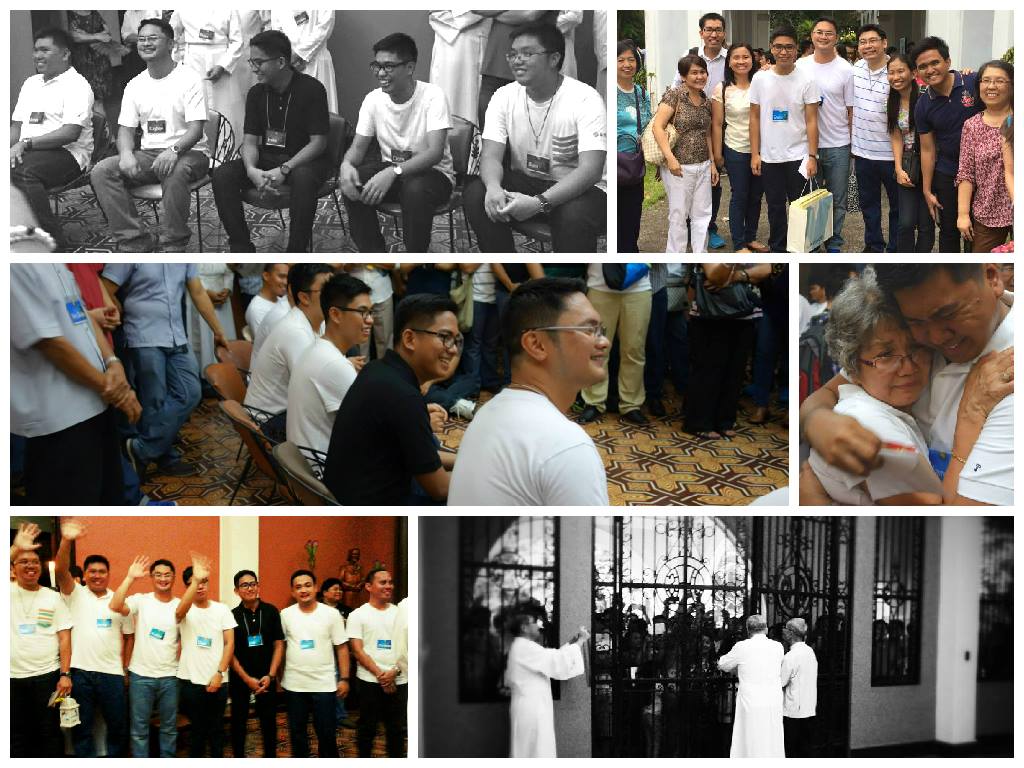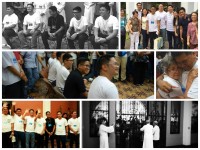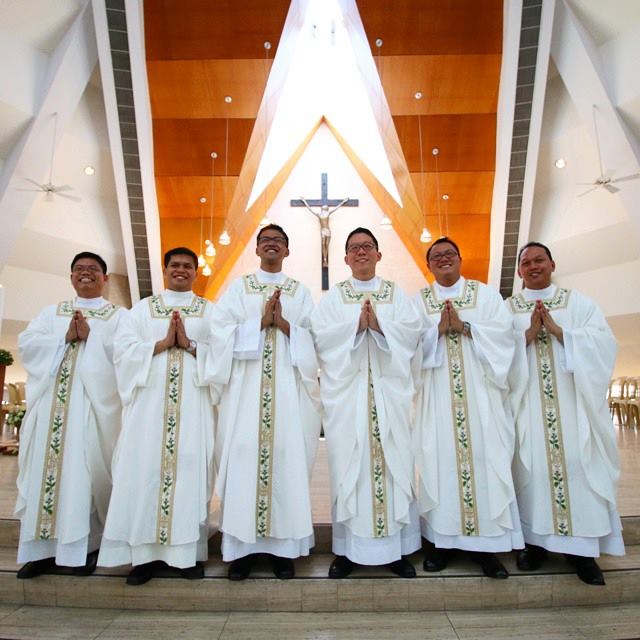A reflection on how the women surrounding St. Ignatius played a significant role and brought him closer to Mama Mary.
by Francis Xin, SJ
According to Oscar Wilde, “Every sinner has a future, and every saint has a past.” The same is true for Saint Ignatius of Loyola.
The Early Days Of Ignatius
Ignatius, originally known as Iñigo Lopez de Onaz y Loyola, was born in 1491 to a noble Basque family in northern Spain, near the town of Azpetia, in the Basque province of Quipuzcoa, in the old kingdom of Castile. He was the youngest of thirteen children. Iñigo never had much contact with his mother, Dona Marina, who may have died shortly after his birth. Consequently, Ignatius was turned over to a wet-nurse, Maria Garin, and spent his first years in her modest home rather than his father’s nearby castle, Casa Torre Loyola.
Each day, Maria would have taken baby Inigo up to Loyola. In time, the boy Iñigo went to the family’s Casa Torre and lived there until he was about 16 years of age. During those days, Dona Magdalena de Araoz, who was both his sister-in-law and the one who had taken the place of his mother, tried to describe for him what the fortress of Arevalo was like. Initially, Ignatius’ father steered him toward a church career. While still a young lad, he was tutored as a cleric, but when he seemed to show little interest in becoming a priest, his father sent him to Velazquez’s court at Arevalo where he served as a page and courtier from 1506 to 1517.
In August 1517, Ignatius was accepted as a courtier serving the Duke of Najera. He spent three years as a gentleman of the viceroy-duke’s household, and during most of this time, he remained in Pamplona. Later on, he joined the forces of the Duke, and became in charge of its defense.
In the spring of 1521, an invasion took place with the French occupying the city of Pamplona in Navarre. The Spanish garrison in the citadel stubbornly held out. Ignatius was foremost among the defenders and was severely wounded in the French bombardment of the citadel on May 20, 1521.
The Women In His Life
You may notice how the significant roles of women shaped the life of Ignatius. These women allowed Ignatius to experience motherly love while growing up. While very little is mentioned and written about the earlier years of St. Ignatius, I was led to contemplate and imagine how these encounters were like.
In Spain today, there is a simple chapel near the house of the mother of St. Ignatius, Dona Marina. As we know, his mother died very early. In the life of Ignatius, he had no mention of her at all. We cannot find any documentation of the relationship between them. Therefore, when he saw this chapel, he must have felt surprised or maybe even experienced anxiety. As I thought more about it, I was reminded of a song that goes:
”In the world only Mama’s dear, Child having Mama’s like a treasure, Close to Mama’s bosom, How happy you can’t tell; In the world only Mama’s dear, Motherless child is like a straw, Away from Mama’s bosom, Happiness nowhere to.find.“
If Ignatius had a chance, perhaps he would have expressed his gratitude to his mother. He would have thanked her for the gift of life. If he could, he would have come close to her, looked at her with affection, and wiped away her tears of guilt for not being able to take care of him. In addition, as he knelt beside her, he would have shared how he was not deprived of experiencing motherly love through the women around him.
My contemplation takes me further to imagining how Maria Garin took on the role of a mother to Ignatius. As he was crying for food, his nursing mother, Maria Garin, ran to him and carried him to breastfeed him. As he started to walk, she followed him patiently to prevent him from falling down. At night, she spent time with him until he fell asleep.
The following day, she brought him up to Loyola and allowed him to enjoy the time with his friends and companions.As Iñigo ran, he probably stopped and looked up to his mother in heaven with a big smile, as if to tell her, “Please be happy for me. Though it is sad that you are not with me, your love is very much present in my childhood:’
Another female in Iñigo life was his sister-in-law, Dona Magdalena. She brought books to him and taught him to read and write. Though sometimes his naughtiness upset her, she remained patient enough and held his hand in teaching him. On another occasion, he approached her and asked her about the characters from the books he was reading, while she teased him, which made them laugh together. He remembered vividly how she spent most of their time together telling him the story of courtly life before he left for Velazquez’s court at Arevalo. He recalled how she did her best to help him prepare for the unknown life in the future.
As he served as a page at Arevalo Castle, he was amazed by everything surrounding him. He enjoyed accompanying his master on his travels and was loved by the hostess, Dona Maria. She treated him like her own son, and supported him to pursue his desires and dreams. She listened to his struggles and passions, and encouraged him to face challenges. In his ups and downs, she stayed beside him and accompanied him. When Dona Maria’s husband passed away, even if she was in pain and needed company, she chose to let Iñigo go to pursue the bright future ahead of him.
At this point, I would like to imagine that Inigo noticed his emotions and tried to calm himself. He stood up, looked at his mother, and embraced her with much affection. No words were spoken but tears were enough to express how blessed he felt. As he finished his recollection of experiences, the young Iñigo led his mother to the statue of Mother Mary in the same Chapel. Tears once more flowed as they both gazed at the Blessed Virgin.
Here before him was another Mother whom he knew more intimately through the women of his earlier years. Iñigo thought that it was through his mother, Maria Garin, Dona Magdalena, and Dona Maria that he as able to develop a relationship with the Blessed Mother. All this time, he was never deprived o fhte expereinc of tenderness, care, and love of a mother with the many mothers that came along his way. On top of it all, he had an Eternal Mother who looked after him. Without a doubt in his mind, the Blessed Mother petitioned with her-that he be placed under the banner of the corss, and enjoy the companionship with our Lord, Jesus Christ. Tears were not enough to express the gratitude welling from his heart.
The Legacy Of Women
In his book Ignatius of Loyola: The Pilgrim Saint, Cornelius Michael Buckley asserts that, “The primordial bonding between Iñigo and his mother, or rather the nonexistence of such a bonding, suggests the absence of the protective, liberating, fostering maternal presence that would have given him early direction, basic confidence, and would have opened up new objectives for him.” Ignatius may not have experienced the love from his own mother, but maternal love was never absent in his early life. He was well taken cared of by a nursing mother, Maria Garin, in his infancy; he grew up well under the care of his sister-in-law, Dona Magdalena in his younger years; and he was well supported to pursue his dreams by his hostess, Dona Maria, in his adolescence. All the affection he received was for his relationship with his unseen biological mother, Dona Marina, and with Mother Mary.
The Women In Our Lives
As I look back, my trust in Mama Mary as a religious was also fostered by my personal experiences with women in my life. When my mother was busy with her work to support our family, my maternal grandmother invited me to have my meals with her. When my father got sick and had to stay in the hospital with my mother who took care of him, my aunt was there to ask me to live with her in the meantime. When my high school teacher, Ms. Song, learned that I was having a hard time continuing my studies, she voluntarily supported me. When I expressed my desire to apply for a religious life, though my mother felt the pain of separation, she still opened her arms to let me pursue my desire. Right now, even if I am far from all of them who have been constant sources of consolation in my life, their love remains with me. Their selflessness and generosity reflect the same virtues of Mama Mary. Whenever I see the statue of Mama Mary, I know that she is here with me – just like my grandmother, my aunt, my teacher, and my biological mother – constantly nurturing and supporting me.

2022, April. The Women in Ignatius’ Young Life. Windhover, Vol 1, pp 6-9.





